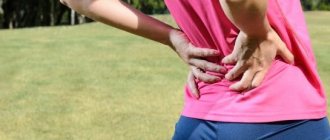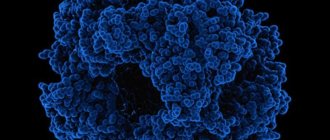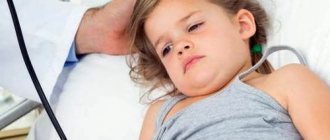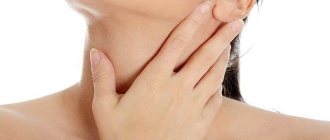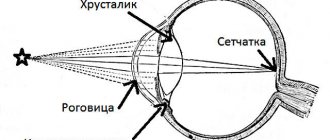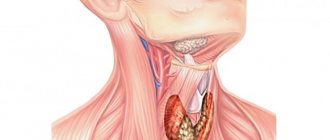- Home >
- Clinic services >
- Neurology >
- Cerebral vasospasm
In the human body, the brain is the most important organ, which not only regulates the functioning of all other organs and systems, but is also responsible for our consciousness, perception and memory.
The human brain, like any other organ, must be supplied with blood and receive the required amount of oxygen and metabolic substances. Therefore, the microvasculature of the brain is one of the most complex vascular networks in our body. Indeed, when blood flow to the brain is disrupted, pathological processes occur, many of which are irreversible. One of the common causes of circulatory disorders in various parts of the brain is vascular spasm. Nowadays, cerebral vasospasm is a condition that most often occurs in people over 30 years of age. What is a spasm, how and why does it occur in the vessels of the brain, and how should this condition be treated?
The definition is: a spasm is a case of sudden contraction of smooth or striated muscle. It is known that our vessels have a wall consisting of smooth muscle, when a vessel spasm (angiospasm) occurs, the lumen of the vessel closes, which is always fraught with complications.
Causes of cerebral vasospasm
Angiospasm often occurs due to:
- overwork;
- nervous or physical stress;
- sedentary lifestyle (for example, prolonged sitting at the computer);
- stress and strong emotions, even positive ones;
- lack of sleep;
- lack of oxygen in the room;
- abuse of coffee and strong tea;
- vitamin deficiency;
- smoking;
- excessive alcohol consumption;
- hypothermia;
- atmospheric pressure fluctuations;
- age-related changes in the arteries.
Spasm of cerebral vessels can be a symptom of osteochondrosis of the cervical spine, arterial hypertension, cerebral aneurysm, tumor formation, vegetative-vascular dystonia, and thyroid diseases.
The risk group includes elderly people and people sensitive to weather changes, smokers, abuse alcohol, often drink strong tea/coffee, suffer from insomnia, hypertension, angina pectoris, diabetes mellitus or dyscirculatory encephalopathy, and have a family history of stroke or myocardial infarction .
How to get rid of headaches yourself using traditional methods
There are several ways to get out of an unpleasant condition at home without the help of a doctor. These methods are suitable if the person suffering from headaches does not have an alcohol addiction, and the drinking was a one-time occurrence.
Drinking regime
Alcohol dehydrates the body and washes away beneficial microelements, so after a heavy libation you should take more liquid. If you abuse alcohol, it is recommended to drink:
- water. Preference is given to alkaline mineral water without gas. It contains potassium, magnesium, and helps quickly restore electrolyte balance. Regidron solution has a similar effect. Within a few hours after administration, it significantly improves well-being, relieves pain, as it accelerates the elimination of toxins;
- brine. In just a few minutes it will improve your well-being, give you vigor and relieve discomfort due to its high content of electrolytes. It is best to drink cabbage brine. It contains succinic acid, which stimulates the liver, accelerates the breakdown and excretion of ethanol, and eliminates hypoxia of brain cells. Brine should not be consumed by people with high stomach acidity;
- freshly squeezed juices, fruit drinks;
- ginger decoction. It has a mild sedative effect, restores vascular function, eliminates headaches, and thins the blood. The drink should not be taken by people with gastrointestinal diseases.
It is better to avoid tea and coffee. Drinks have a diuretic effect and wash away beneficial microelements, which are already in short supply after alcohol abuse.
In addition to following the drinking regime, it is recommended to eat vegetables and fruits that contain sufficient liquid - cucumbers, broccoli, zucchini, celery, watermelon, citrus fruits. Walking in the fresh air and sleeping in a cool, well-ventilated room will also help cope with headaches.
Water treatments
A hot bath, steam bath, or sauna will speed up the removal of toxins and reduce swelling. Only people who do not have problems with the cardiovascular system can take the procedure, otherwise irreparable harm to health can be caused. For the same reason, you should not take a contrast shower. This threatens a heart attack or stroke.
To improve your well-being, it is best to take a bath with water at room temperature. It will allow you to relax and have a tonic effect. You can add herbs that have a calming and relaxing effect to the water - chamomile, valerian, motherwort, lemon balm, mint. It should be remembered that herbal medicine has contraindications and can cause a severe allergic reaction.
New dose of alcohol
Alcohol abusers believe that the easiest and most effective way to get rid of headaches is to get drunk. A glass of beer or a glass of vodka will bring relief in a matter of minutes, but in no case should you resort to this method
. Unpleasant sensations can be eliminated for a short time. Then the pain will return and become more intense. To alleviate the condition, you will need a new dose of alcohol. This will create a binge, the exit from which will require significant effort. In this case, you cannot do without the help of a narcologist.
Traditional methods of combating headaches that seem harmless at first glance may turn out to be useless, and in some cases, aggravate the condition and lead to complications. Even if you feel slightly unwell after drinking too much alcohol, it is best to consult a doctor. The doctor will give advice on how to quickly and safely get out of a painful condition.
Signs of cerebral vasospasm
The main symptom of the pathological process is headache of varying localization and intensity. It usually occurs in the temples and forehead, sometimes felt all over the head.
You may also experience:
- dizziness;
- pain in the eyes, ear, neck;
- noise in ears;
- “flies” before the eyes;
- darkening of the eyes;
- nausea;
- changes in blood pressure;
- feeling tired;
- numbness of lips;
- tingling in temples.
If a spasm is a precursor to a stroke or rupture of an aneurysm, disturbances in speech, sense of orientation in space and coordination of movements, and loss of consciousness are possible.
What medications relieve headaches during a hangover?
Drug therapy is an effective way to cope with hangover headaches when folk remedies are powerless. To alleviate the condition, you can drink a sorbent, analgesic or antispasmodic. Before taking, you should carefully study the instructions and measure your blood pressure. Many drugs are incompatible with alcohol, have contraindications and can only make you feel worse. Some medications aggravate the condition with high or low blood pressure.
Sorbents
Absorbent drugs are the first aid for alcohol abuse. They provide quick detoxification and help get rid of unpleasant hangover symptoms. The simplest and most popular remedy is activated carbon. The sorbent has a quick effect and alleviates the condition. The drug should be taken in a minimum dosage of 1 tablet per 10 kg of weight. The stronger the intoxication, the higher the dose of the medication, so it is better to drink activated carbon in the form of a soluble powder.
Enterosgel is a modern analogue of activated carbon. To alleviate the condition, even with severe intoxication, only 1-3 tablespoons of sorbent are enough. The drug is used both for hangover syndrome and for its prevention. If you drink Enterosgel before drinking alcohol, it will reduce the degree of absorption of alcohol, reduce the unpleasant consequences of drinking alcohol, but will prevent the desired effect of intoxication.
Sorbents are compatible with other medications. They should be taken at intervals of 1.5-2 hours from taking other medications. Otherwise, the effectiveness of the drugs will decrease.
No-Shpa
The plant-based drug dilates blood vessels and relieves spasms, which helps eliminate headaches due to hangover syndrome. No-Spa slows down the absorption of alcohol, improves well-being, and facilitates the functioning of the liver and stomach. The drug should not be taken if you have chronic kidney or liver diseases. Simultaneous use of No-Shpa with alcohol can lead to swelling and a sharp decrease in blood pressure.
Aspirin
The drug thins the blood and has an analgesic effect. Aspirin acts within 10-15 minutes after administration, normalizes the condition of blood vessels, improves blood flow and quickly relieves hangover symptoms.
The drug should not be taken if you have gastrointestinal diseases. Aspirin may cause bleeding in people with chronic stomach problems or after exceeding the recommended dosage of the medication.
Ibuprofen
Ibuprofen has a strong analgesic effect and does not irritate the gastric mucosa, unlike other painkillers, so it can be taken even for gastrointestinal diseases. The drug acts for 3-4 hours. The necessary effect of the drug for a hangover occurs only with the simultaneous consumption of a sufficient amount of liquid.
Alkozeltzer
The drug contains acetylsalicylic acid, thins the blood, has an anti-inflammatory and analgesic effect. Available in the form of water-soluble tablets, it has a pleasant taste. Like Aspirin, Alkozeltzer should not be taken if you have problems with the gastrointestinal tract. An analogue of the drug is Alka-Prim.
Antipohmelin
It helps not only to get rid of headaches during a hangover, but also to prevent unpleasant symptoms if you drink the drug before a feast. Antipohmelin does not have a detoxifying effect, therefore it is ineffective for alcohol poisoning.
Medicines help to quickly cope with headaches, but have contraindications. Before taking medications, it is better to consult a doctor to avoid side effects.
Treatment
If the problem is caused by external negative factors, they should be avoided if possible. If a spasm occurs against the background of any disease, therapy should be aimed at curing it.
At the same time, drugs are used to relieve spasms of cerebral vessels - No-Shpa, Halidor, Dibazol, Doverin, Papazol, Spazmol. They affect the muscular wall of blood vessels, reduce muscle tone, and expand the lumen of blood vessels.
You can also take painkillers for cerebral vasospasm - Analgin, Aspirin.
Antispasmodic analgesics are drugs of a combined composition that eliminate spasms and relieve pain. This group includes Pentalgin, Andipal, Baralgetas, Novigan, Spazgan, Spazmoblok.
To improve cerebral circulation, it is recommended to take nootropic drugs such as Actitropil, Gopantam, Idebenone, Nootropil, Recognan, Piracetam.
For the treatment of cerebrovascular disorders, medicines and dietary supplements based on ginkgo biloba leaf extract are widely used. This plant improves the rheological properties of blood and oxygen supply to the brain, normalizes microcirculation and metabolism in cells, reduces the permeability of vascular cells, and has antithrombotic and antihypoxic effects.
The patient is recommended physiotherapeutic procedures: oxygen therapy, kinesiotherapy, hydrotherapy, magnetic therapy, darsonvalization. Massages in the neck and back of the head help improve blood circulation.
Diagnosis of encephalopathy
When examined, the vast majority of patients with discirculatory encephalopathy reveal characteristic diseases or physiological characteristics and habits. These risk factors include:
- arterial hypertension (blood pressure from 140/90 mm Hg and above);
- heart diseases (coronary disease, rheumatic lesions, heart rhythm disturbances, etc.);
- diabetes;
- excess body weight;
- sedentary lifestyle;
- hypercholesterolemia (total cholesterol above 6.2 mmol/l);
- long-term and frequent neuropsychic overstrain (stress);
- family history of cardiovascular diseases (stroke, myocardial infarction or arterial hypertension in close relatives);
- smoking;
- alcohol abuse.
Men with rapidly progressing dyscirculatory encephalopathy usually have a history of psycho-emotional stress, a sedentary lifestyle, alcohol abuse, lack of regular treatment and the presence of two or more concomitant diseases. In women, in addition to the listed factors, excess body weight often contributes to the unfavorable course of the disease.
If patients with arterial hypertension and atherosclerosis (or representatives of other risk groups) have complaints of headache, dizziness, decreased performance, memory impairment, then the initial stage of dyscirculatory encephalopathy can be suspected. Patients with such symptoms should, first of all, constantly monitor blood pressure, undergo an electrocardiographic examination, complete general blood and urine tests, and blood tests for sugar and lipids. A psychological study to assess the state of memory, intelligence, attention and speech would not hurt.
Even small nonspecific changes in the electrocardiogram can be harbingers of cardiovascular diseases, manifested in impaired blood circulation in the brain. By the way, normal electrocardiograms or echocardiograms do not exclude the presence of the disease, since changes can only be noticeable at the time of myocardial ischemia (anemia) or an attack of angina. An electrocardiogram taken during physical activity provides important information. Daily monitoring of heart function also allows you to identify abnormalities.
Information about the condition of the fundus (the back wall of the eye), the cells of which are directly connected to the neurons of the brain, is important for making a diagnosis. Changes in the blood vessels and nerve cells of the fundus make it possible to judge about disturbances in the structure of the brain tissue. In patients with discirculatory encephalopathy, hearing is often reduced, the swallowing reflex and sense of smell are impaired. Therefore, to make a diagnosis, it is necessary to conduct an otoneurological study that reveals disorders of the vestibular apparatus, auditory, olfactory and taste perceptions.
Useful information is provided by studying the rheological properties of blood - its fluidity. The main factor influencing the fluid properties of blood and the degree of its saturation with oxygen is considered to be hematocrit - the ratio of the volume of red blood cells to the volume of plasma. Its increase increases blood viscosity and worsens blood circulation. There is a direct connection between high hematocrit and cerebral infarctions.
After preliminary studies, the patient is usually referred for an X-ray examination of the cerebral vessels - angiography. Doctors consider angiography to be the “gold standard” with which the results of other research methods are compared. After the administration of a special contrast agent, X-ray images of the brain vessels are obtained. Angiography provides information about the duration and sequence of filling of blood vessels, about the formed “bypass” circulatory pathways in case of blockage or narrowing of cerebral vessels. The results of the study are important when deciding on the feasibility of surgery.
Electroencephalography is an old and very common method of studying the brain, based on recording its electrical potentials. Changes in the encephalogram indicate organic changes in the brain tissue, therefore, at the initial stage of the disease with dyscirculatory encephalopathy, encephalography may not reveal any abnormalities.
A real revolution in brain research was made by the advent of computed tomography, which combines the achievements of radiography and computer data processing methods. With its help, you can obtain not indirect, but direct data about brain structures and their changes. The method allows you to determine the location and size of brain lesions and their nature.
Magnetic resonance imaging of the brain.
Image of a healthy brain (A); changes in the brain matter in Binswanger's disease - rarefaction of the white matter of the brain (B); hydrocephalus - accumulation of fluid in the brain tissue - manifests itself in the form of expansion of the grooves and ventricles of the brain (shown by arrows) (B); multi-infarct condition - dead nerve tissue appears as small dark spots (shown by arrows) (D). Image: Science and Life
Recently, magnetic resonance methods have been used to diagnose cerebral circulatory disorders: nuclear magnetic resonance, magnetic resonance imaging and magnetic resonance angiography. Nuclear magnetic resonance provides information about the physicochemical properties of brain structures, making it possible to distinguish healthy tissues from altered ones. Magnetic resonance imaging allows you to obtain images of the brain, determine the location, size, shape and number of lesions, and study cerebral blood flow. Magnetic resonance angiography is a modification of magnetic resonance imaging. With its help, you can study the passage and “caliber” of extracranial and intracranial arteries and veins.
Currently, highly informative methods for obtaining three-dimensional images of brain structures have been created and are successfully used: single-photon emission computed tomography and positron emission tomography.
Duplex scanning of the internal carotid artery.
A formed small atherosclerotic plaque is visible, the lumen of the vessel is slightly narrowed (A); later stage of atherosclerosis - the lumen of the vessel of the internal carotid artery is partially blocked by a large plaque (B); occlusion - complete closure of the lumen of the vessel with a plaque (B); artery tortuosity (D) (Image: Science and Life)
Ultrasound methods are widely used to examine patients not only in hospitals, but also in outpatient settings: Dopplerography and echotomography, duplex scanning and transcranial Dopplerography. Doppler ultrasound is used to identify lesions of the carotid and vertebral arteries. It makes it possible to obtain information about the profile of blood flow in the vessels. With duplex scanning, color contrast of flows allows you to more clearly distinguish between moving (blood) and stationary (vascular walls) objects. The main vascular lesions detected by transcranial Doppler ultrasound are blockages, stenoses, spasms and aneurysms. The most complete information about the state of the vascular system of the brain can be obtained by comparing data from various ultrasound methods. Recently, a new method of ultrasound diagnostics has appeared - transcranial sonography with color Doppler coding. With its help, you can “see” the structures of the brain through the bones of the skull.
Prevention
Preventive measures are aimed at maintaining the normal functioning of the circulatory system and strengthening blood vessels. These include:
- normalization of work and rest schedules;
- good sleep;
- moderate exercise;
- hardening;
- to give up smoking;
- reasonable alcohol consumption;
- adequate drinking regime;
- avoiding hypothermia;
- proper nutrition.
Doctors recommend eating more vegetables, fruits and herbs, and giving preference to fish and lean meats. Limit the consumption of butter, coffee, black tea, cocoa, sugar, chocolate, smoked meats, lamb and pork, mayonnaise and sauces, fried foods.
Popular questions about cerebral vasospasm
How to understand the cause of a headache?
First of all, it’s worth analyzing the situation - what could be causing the problem? Perhaps a headache occurs when the weather changes, after excessive physical exertion, hypothermia, stress, or frequent lack of sleep. If there is no explainable reason, you should definitely seek help from a doctor.
What drugs can be taken without a doctor's prescription?
Most non-narcotic analgesics and antispasmodics are sold without a prescription.
The most effective drugs?
The best tablets for cerebral vasospasm are combined drugs that have analgesic and antispasmodic effects, for example, Bralangin, Pentalgin and Spazmalgon. Antispasmodics that reduce vascular tone, for example, Papaverine and Drotaverine, are also effective.
Drug treatment for muscle spasms
There is no universal remedy for muscle spasms of the head and neck. If the pain is episodic, taking painkillers in combination with supplementation with vitamins and minerals may be enough. If we are talking about chronic involuntary muscle contractions, the patient may be prescribed antiepileptic drugs, muscle relaxants, antidepressants, and antipsychotics. The doctor may also recommend medications to strengthen blood vessels and normalize blood circulation.
All patients with muscle pain are advised to ensure sufficient physical activity, avoid alcohol consumption, reduce stress levels, eat nutritiously and get enough sleep.
